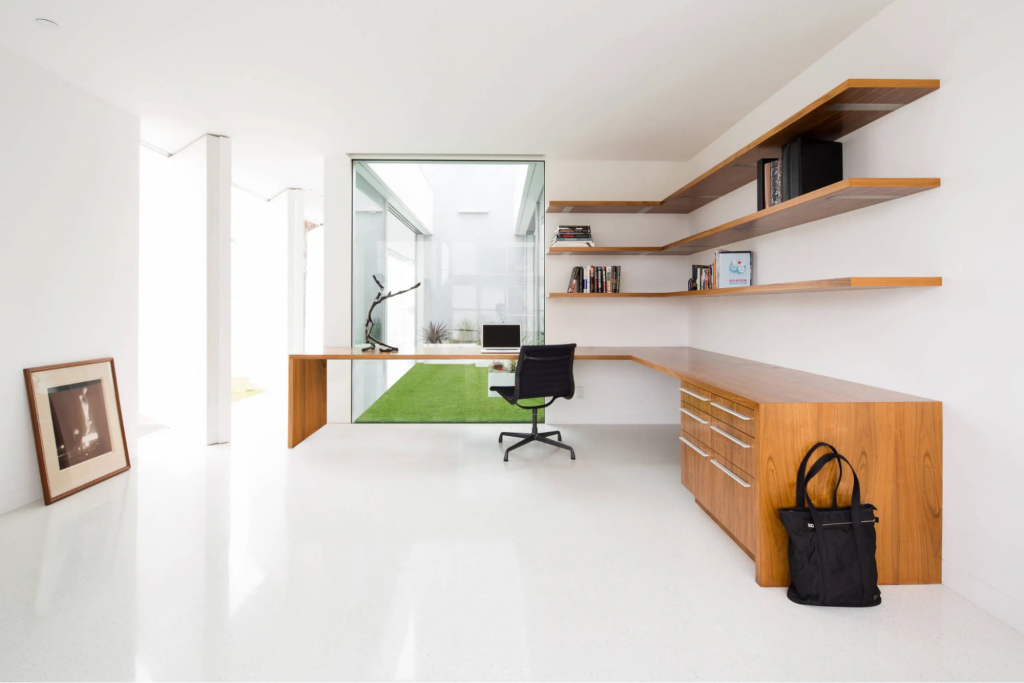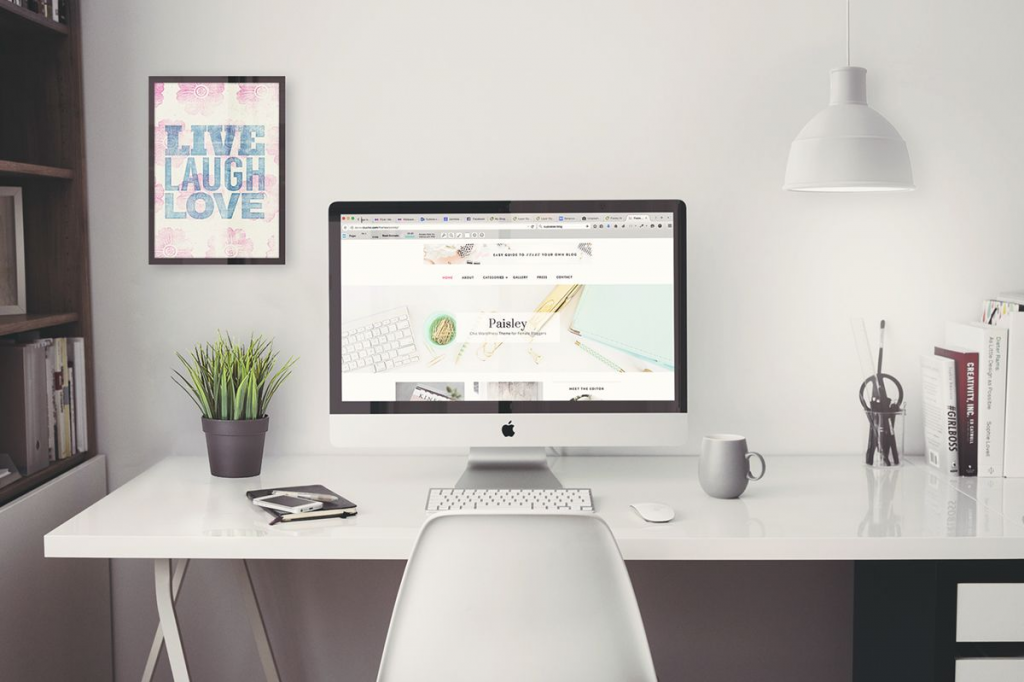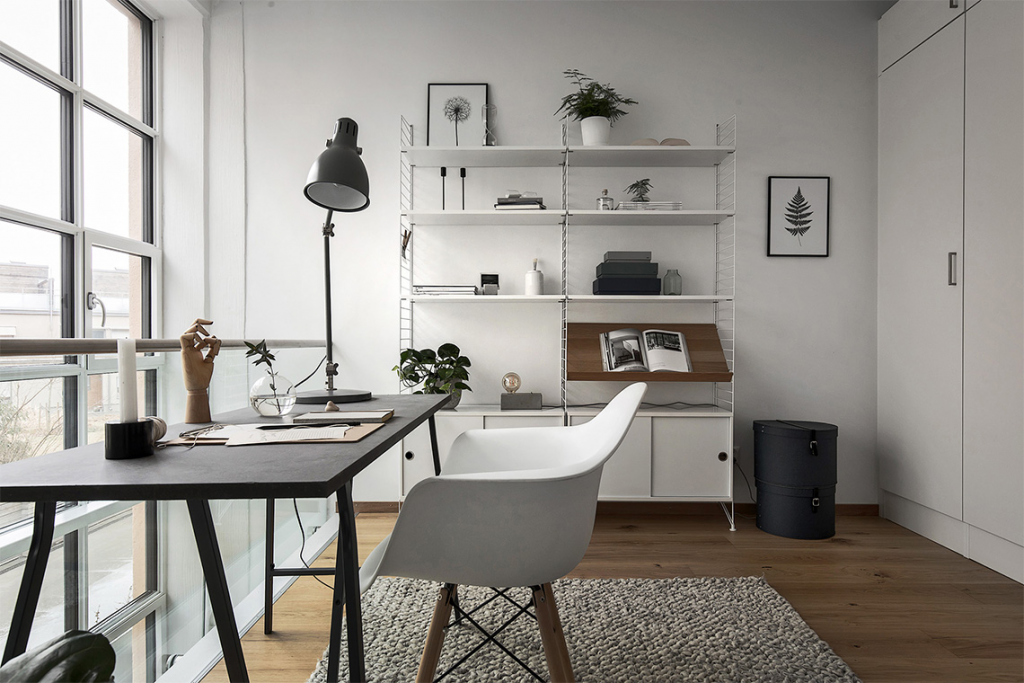A minimal home office design not only enhances the visual appeal of your working environment but also improves productivity by eliminating unnecessary distractions. By focusing on minimalist interiors, desks, and minimal setups, even the smallest homes can boast stylish and functional office spaces. This article will explore how to create a minimalist home office that is both aesthetically pleasing and highly functional, incorporating modern design trends and practical tips that fit right into modern homes.
Introduction to Minimalism in the Workplace
At its core, minimalism in office designs is about creating spaces that are clean, uncluttered, and focused on what’s truly essential. With minimalist styling, your office will not only look good but will also promote a clear and organized mind. The beauty of minimalism in office ideas is that it can be applied to the smallest homes, often transforming them into the most productive working areas. Design elements are carefully chosen and office layouts streamlined to maximize efficiency and minimize distraction.
Setting the Foundations for Your Minimal Office Space
Selecting the right space for your office is crucial. When you’re working with limited space in the smallest homes, it’s important to choose a spot that could help avoid household distractions. Ideally, your minimalist home office should be in a quiet area to foster concentration. Good lighting—especially natural lighting—not only influences your mood but also reduces eye strain. A well-planned layout will help ensure that everything you need is within reach, maintaining a clean and clutter-free workspace.
Essential Furniture for a Minimalist Home Office
When choosing furniture for your office, the minimalist styling should be the guiding principle. Start with the essentials: a desk and chair. A sleek, modern minimalist desk should provide enough space for your daily tasks without overwhelming the room. Comfortable chairs that don’t sacrifice ergonomics for style are also a must. Storage solutions are another key consideration; they often have a dual purpose, serving as furniture pieces while keeping only the necessary items on hand.

Selecting a Minimalist Color Palette and Decor
The color palette of your office can say a lot about your style and also affects your productivity. White walls and light woods make the room feels more extensive and brighter, maximizing the effects of natural lighting. Adding a feature wall featuring white or other tone decor could also be a good place to start. It should keep the aesthetics clean yet personalized. Neutral color schemes are not just safe options; they’re often the backbone of stylish minimalist offices.
Decor and Accessories That Embody Simplicity
Wall decor, plants, and personal items should add to your space without causing clutter. Decor pieces in a minimalist home are not only for aesthetics but also for inspiration. A great way to incorporate personal touches is through a selective display of artwork or photos. Minimalist styling also uses office accessories that are functional, like a sleek lamp or a set of simple organizers, keeping everything neat and tidy.
Organizing for Efficiency in a Minimal Workspace
A clutter-free workspace is a hallmark of the modern minimalist office. To achieve this, get creative with decluttering techniques. One of the simplest ways to maintain minimal setups is by adopting a ‘less is more’ approach to your possessions. Periodic assessments of what you have on your desk and in your office will keep clutter at bay. Keeping only what you need for your day-to-day tasks can profoundly impact workspace efficiency.
Lighting and Ambience in Your Minimal Home Office
A well-lit office does not just rely on good lighting fixtures but also on the strategic use of natural light. Windows can provide plenty of natural lighting during the day, reducing the need for artificial lights and offering an energy-efficient solution. For nighttime work, LED lamps are an excellent choice. They are not only energy-efficient but also have a long lifespan, providing consistent, comfortable lighting for your working area.

Incorporating Technology into Your Minimalist Office
Modern homes require cutting-edge technology to keep up with the demands of today’s professionals. In a minimalist office, you should aim for an ‘invisible’ tech setup, which means hiding away wires and employing wireless devices wherever possible. This will not interrupt the clean lines of your minimal home office design. Consider the following top tech integrations that could enhance your space:
- Cable Management Systems: Tucked away cables for a neat look.
- Wireless Printers: Reducing the need for constant physical connectivity.
Integrating technology into your minimalist office also means choosing devices with a sleek design that complements your overall decor. Here are some examples:
Technology Integration Table:
| Device | Function | Design Aesthetic |
|---|---|---|
| Laptop/Computer | Workstation essential. | Choose slim, clean-lined models. |
| Wireless Keyboard & Mouse | Desk accessories that enhance productivity. | Minimalist, ergonomic designs. |
| Smart Speakers | Hands-free assistance and connectivity. | Compact and subtle to blend with the environment. |
Sustainable Practices in Minimalist Office Design
Eco-friendliness is often a central tenet of the minimalist philosophy. Sustainable practices in a minimalist office could include using furniture made from natural woods or recyclable materials. Minimizing energy consumption through smart devices and LED lighting is also crucial. Additionally, choosing accessories crafted from sustainable materials can contribute to the overall environmental goals of your home office.
Conclusion
Minimalist home office design is not just about the aesthetics; it’s about creating a productive workspace that keeps you focussed on your tasks. By considering factors like furniture pieces, color schemes, and organization, you can construct a stylish yet functional office that fits your needs. Modern minimalist aesthetics also provide a sense of serenity, making it easier to work effectively. Start by implementing these minimal home office design ideas and enjoy a calmer, more productive working environment.

FAQs
Q1: What is the best color for a minimalist home office?
A1: The best color for a minimalist home office is typically a neutral shade such as white, beige, light grey, or pastel tones. These colors create a calm and clean aesthetic that minimizes distractions and fosters focus.
Q2: How do I choose the right furniture for a minimalist home office?
A2: Look for furniture with clean, simple lines and a functional design. Prioritize quality and ergonomics over quantity. Consider a spacious desk, a comfortable chair, and sufficient storage that keeps clutter hidden.
Q3: Can a minimalist home office still be personalized?
A3: Absolutely! Personalization in a minimalist office comes from selective decor. Choose a few meaningful items, such as artwork or family photos, that inspire you without contributing to a sense of clutter.
Q4: What are some ways to keep a minimalist office organized?
A4: Use built-in storage, floating shelves, and concealed compartments to store office supplies. Adopt digital tools to reduce paper clutter, and make a habit of regularly decluttering and reevaluating what you need in your space.
Q5: How can I make my minimalist home office more eco-friendly?
A5: Choose sustainable materials and products, like bamboo or recycled steel, for your furniture. Opt for LED lighting, use natural light when possible, and invest in technology with energy-saving features. Additionally, consider the environmental impact of your office supplies and try to go paperless whenever feasible.
